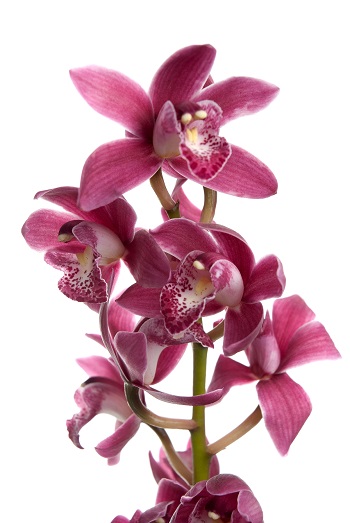It takes a lot of energy for a Phalaenopsis (aka “moth orchid” because of its looks) to grow new flower stalks and buds, and to keep the flowers healthy until blooming season is over. In fact, the effort involved is just like running a marathon. A Phalaenopsis will require similar preparations to bloom successfully. And much like a marathon runner after the race is complete; an orchid is likely to be quite exhausted. That’s why, to help your orchid prepare for blooming, and recover as well, you need to know how to properly care for your orchid during these sensitive times.
Before Blooming – The Preparation Period
The moth orchid’s natural blooming cycles usually occur during fall or spring. The shorter days and cooler nights during these seasons provoke the plant into bearing flowers by activating its survival instincts. This tendency can be used to your advantage when you want to make your orchid bloom and rebloom. All it takes is a bit of manipulation.

Dropping the nightly temperature to around 55°F for a few weeks will help promote the growth of flowers, as the temperature shift will make the orchid believe that the seasons are changing. This means that you can theoretically make your plant bloom during any time of the year; however, you should avoid forcing your Phalaenopsis to bloom repeatedly.
During the blooming season, your Phalaenopsis will require plenty of fertilizing. Blooming is hard work for the plant; it needs to grow new stalks, develop buds at the nodes and transfer nutrition to the emerging flowers. Unless the plant receives plenty of nutrition, it may fail to bloom or even die.
Which kind of fertilizer to use depends on the type of Phalaenopsis you have and the growing medium in which it is planted. Pay attention to the NPK (nitrogen, phosphorus, and potassium) value on the fertilizer label. Plants in a fir bark mix may need a formulation rich in nitrogen, such as 30-10-10, to help break down and absorb the nutrition from the bark.
During the pre-blooming period, orchids require plenty of phosphorus and potassium to help them build DNA and extract nutrition from the light. Studies have shown that formulations with high phosphorus and potassium content, such as 10-30-20, produce more flowers and healthier stems.
Reduce the amount of light when the blooming season approaches. The easiest way to do this is by placing it in the shade. Allowing the medium to dry out more than usual between waterings may also encourage the growth of flowers but be careful not to let the medium become bone-dry.
After Blooming – The Resting Period
As soon as the first buds begin opening, you should stop watering and fertilizing the plant for a while. Resume your normal regimen after all the flowers have opened. Phalaenopsis flowers develop and open over a period of several weeks. During this time, the orchid will focus all its energy on blooming, so the plant will be tired. In the natural growth cycle of Phalaenopsis, the orchid develops flowers in spring or autumn, and either remains dormant during winter or focuses its energy on growing stronger stems, new leaves, and longer roots during the summer. This is why moth orchids grow much faster during warmer seasons.
You may feel tempted to manipulate the plant into blooming again the same year but be cautious! You should only attempt to rebloom your orchid if the plant is particularly healthy, or you may kill it. If you are in the habit of repotting your Phalaenopsis after it has finished blooming, you should not attempt to force it to rebloom. The orchid will spend most of its energy adapting to the new growing medium and establishing new roots and will not have energy left for reblooming.
Likewise, if your Phalaenopsis is weak or unhealthy, you should not attempt to rebloom it. While it is possible to bring a weak moth orchid to bloom, it will probably die shortly thereafter. Most commercial growers prepare their orchids by stressing them in the above manner to ensure they are near blooming by the time they go on sale. This means that a newly bought orchid may need more time to recover after blooming for the first time, possibly up to a year. Therefore, you should not keep stressing your plant if it refuses to rebloom during the first year; wait until the next flowering season, giving your plant plenty of care and attention while it recovers.
Mary Ann Berdak is the publisher of OrchidCareZone.com – a top online destination for orchid growing tips and advice. For more information on caring for your newly purchased plants including a free download of her report, “The 5 Biggest Orchid Mistakes (and How to Avoid Them!)” visit OrchidSecretsRevealed.com.
Related Articles & Free Email Newsletter Sign Up
3 Questions to Ask Before Buying from an Orchid Grower
4 Simple Orchid Care Tips for Newbies




Comment here